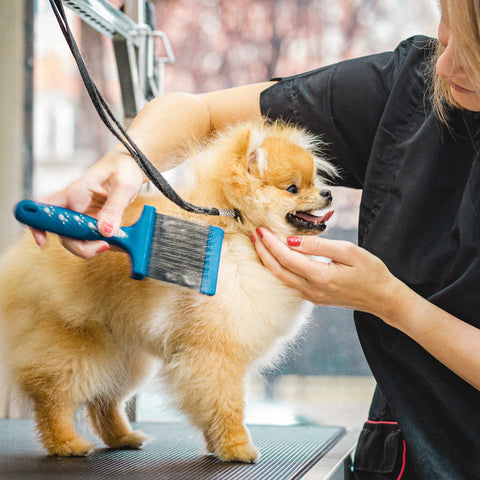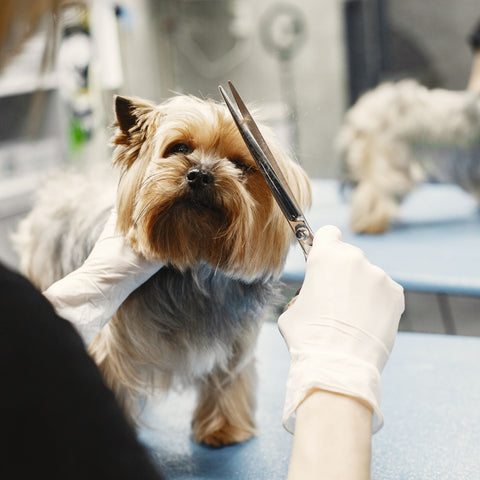Welcome to the ultimate guide for grooming short-haired dogs in 2024! In this comprehensive guide, we will delve into effective methods, best practices, and essential considerations to ensure that you offer top-notch grooming services for short-haired canine companions.
Grooming short-haired dogs requires a different approach compared to their long-haired counterparts. As a professional service provider, it's crucial to understand the unique needs of these breeds to deliver the best grooming experience. Let's explore the methods and best practices to keep short-haired dogs looking and feeling their best.
In the realm of short-haired dog grooming, it's essential to start with the basics. Regular grooming not only keeps the coat healthy but also contributes to the overall well-being of the dog. Using quality products such as dog shampoo and a dog bath brush ensures a thorough and gentle grooming experience.
Methods for Grooming Short-Haired Dogs
The Weekly Grooming Method
For a comprehensive grooming routine, the weekly method ensures that short-haired dogs stay clean, healthy, and comfortable throughout the week. Follow these steps:
- Decide if a bath is required: Assess the dog's condition. If a bath is necessary, proceed to the next steps.
- Bathe: Use a gentle dog shampoo to clean the coat thoroughly. Massage the shampoo into the fur, ensuring all areas are covered.
- Use Conditioner: Apply a dog-friendly conditioner to keep the coat soft and manageable.
- Dry: Allow the dog to air-dry or use a dog dryer on a low setting. Pat the coat gently to absorb excess water.
- Trim Hair and Nails: Trim any excess hair and keep the nails short for a neat and polished appearance.
Recommended Products: PRIDE+GROOM PRO Coat Specific Shampoos and Conditioner.
The Daily Brushing Method

Daily brushing is a quick yet effective way to keep short-haired dogs looking their best. Follow these steps:
- Damp Hair: Lightly dampen the dog's coat with a spray bottle of water.
- Remove Hair and Dirt: Use a quality brush to remove loose hair and dirt. This step helps maintain a clean and healthy coat.
- Get In Difficult Areas: Pay attention to areas that are prone to matting, such as behind the ears and around the neck. Use a dog bath brush for added effectiveness.
- Comb: Comb through the coat to ensure it's tangle-free and smooth.
- Finish: Finish the process by giving the dog a once-over to ensure no spots were missed.
Recommended Product: THE LEAVE IN by PRIDE+GROOM PRO
Also Read - Service Dog Spotlight: Georgia Police K9 Foundation
Short-Haired Dog Grooming Best Practices
Grooming short-haired dogs comes with its own set of considerations and techniques to ensure their coat remains healthy, shiny, and free from discomfort. Here are some best practices to follow when grooming short-haired breeds:
1. Invest in a Good Brush
Choose a brush specifically designed for short-haired breeds. A slicker brush or a rubber grooming mitt can effectively remove loose hair and distribute natural oils, promoting a sleek and glossy coat.
Recommended Product: THE ONLY BRUSH by PRIDE+GROOM PRO
2. Use a Gentle Dog Shampoo and Conditioner
Opt for high-quality dog grooming products, including a gentle shampoo and conditioner. Short-haired dogs may not require as much maintenance, but using the right products ensures their coat remains clean without stripping away essential oils.
3. Keep Dog Nails Trimmed Short
Regularly trim dog's nails to prevent discomfort and maintain overall paw health. Short-haired breeds, though low-maintenance in terms of coat length, still benefit from well-groomed paws.
4. Keep Brushing
While short-haired dogs may not require daily extensive brushing, incorporating regular brushing into routine is beneficial. It helps in removing loose hair, dirt, and stimulates the skin, promoting a healthy coat.
5. Spot-Check Pads & Ears
Periodically check the dog's paw pads for any signs of irritation, cuts, or foreign objects. Short-haired breeds can be more sensitive to rough surfaces, so keeping their paw pads in good condition is essential. Similarly, check the ears for wax buildup or signs of infection.
6. Mindful Bathing
Short-haired dogs typically do not need frequent baths. However, when bathing is necessary, use a mild dog shampoo and ensure thorough rinsing. Be mindful of the water temperature and make the experience as positive as possible to reduce stress.
7. Adjust Grooming Frequency
Short-haired breeds generally require less grooming compared to their long-haired counterparts. Adjust the grooming frequency based on the dog's specific needs, age, and lifestyle.
8. Regular Vet Check-ups
Schedule regular veterinary check-ups to address any health concerns promptly. A vet can provide insights into specific grooming needs based on the dog's breed and overall health.
9. Teeth Maintenance
Dental hygiene is vital for all dogs, regardless of coat length. Brush dog's teeth regularly, provide dental chews, or use other vet-approved dental care products to maintain oral health.
10. Positive Reinforcement
Make grooming a positive experience for short-haired dogs. Use treats, praise, and playtime as rewards to create a positive association with grooming sessions. Grooming short-haired dogs may be less intensive than grooming long-haired breeds, but it is equally important for their overall well-being. By following these best practices, you'll not only keep short-haired companions looking sharp but also contribute to their health and happiness.
Considerations for Short-Haired Dogs

- Skin Sensitivity: Be mindful of the dog's skin sensitivity, especially during bathing. Choose products that are gentle and suitable for sensitive skin.
- Allergies: Take note of any allergies the dog may have to specific grooming products. If unsure, consult with the owner and a veterinarian.
- Equipment Safety: Ensure all grooming tools are in good condition to avoid accidental injuries to the dog.
- Stress Levels: Monitor the dog's stress levels during grooming sessions. Take breaks if needed and provide a calming environment.
Conclusion
In conclusion, mastering the art of grooming short-haired dogs is all about understanding their unique needs and adopting the right practices. This comprehensive guide has walked you through effective grooming methods, step-by-step procedures, and best practices to ensure your short-haired client remains healthy, comfortable, and looking their best.

